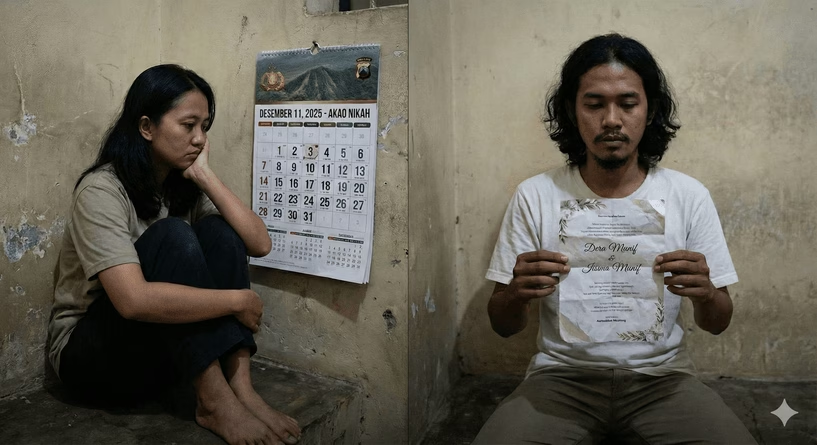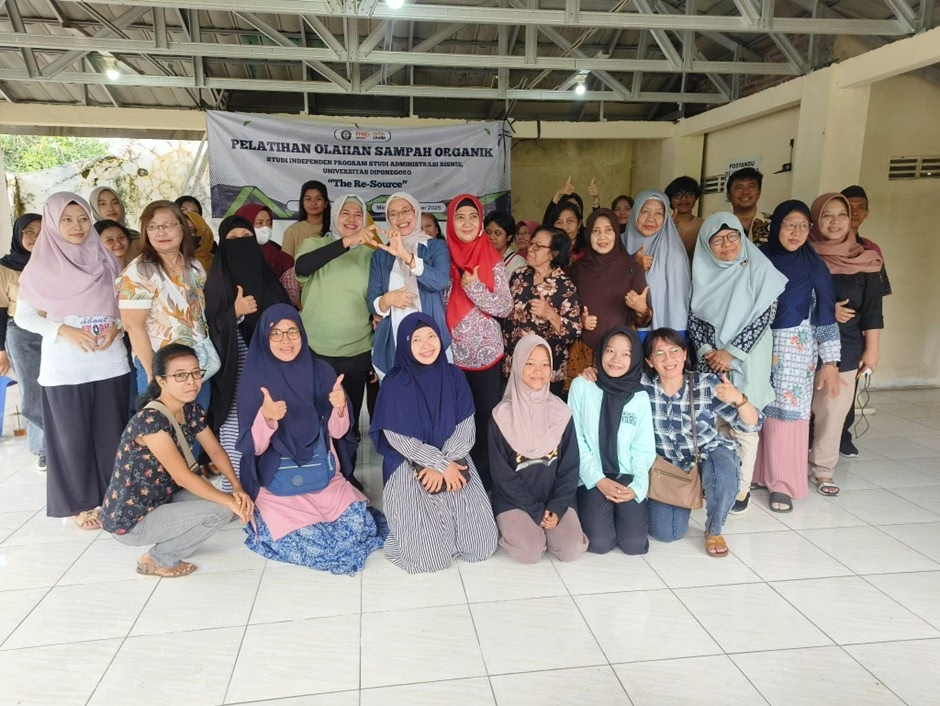From satellite it looks like a green fan, but the Mahakam Delta has lost more than half of its vegetation.
The boat carrying four people cuts through the expanse of brownish brackish water. The noise of the engine, competing with the sound of the wind. Only 10 minutes, now, the boat enters the waters flanked by forest. Ancu, the boat owner, said the boat was in a mangrove area in Salo Palai, Muara Badak, Kutai Kartanegara, East Kalimantan.
Then, the sound of the engine slowly faded and the boat was moored on a wooden stage resembling a small harbor. Ancu immediately ordered his passengers to board the small harbor. The man whose real name is Syamsul Alam, will show how planting mangroves has benefited the ponds he manages.
The four-hectare expanse of ponds separated by embankments immediately greeted us. In several places, a collection of mangrove plants were left alone. Some were already lush, some were still buds. The greening effort in this pond area is called silvofishery.
“If there are these mangrove trees, it makes them fatter and more abundant. Before there were no mangroves, the shrimp died easily. Two months is okay, good. But after that, it dies,” said this Sulawesi-blooded man, at the end of February.
From this pond, he harvests milkfish, crabs, and shrimp. However, the most superior is shrimp. He harvests twice a month. When the tide is high at night, he will put the bagang. Then, at 5 am, the bagang is lifted and he has harvested.
“It can be 20 to 50 kg per harvest. The price varies. Black shrimp can now be more than IDR 100 thousand. White shrimp are IDR 70-80 thousand. Well, crabs are expensive. They once reached IDR 600 thousand,” he explained.
Ancu now manages more environmentally friendly ponds. No longer using chemical fertilizers or pesticides. However, now he provides probiotics or natural fertilizers. He is also directing the development of ecotourism for additional income from his ponds, which he said is also supported by the government.
However, knowledge about environmentally friendly ponds was not direct from the start. Previously, Ancu was the same as other farmers in his area who developed ponds with chemicals and thought that mangrove trees had to be cleaned.
He knows a lot and received support to implement environmentally friendly ponds from the Mangrove Lestari Foundation (YML) and is supported by the Indonesian Planet Urgensi Foundation (YPUI).
The hard road to introducing silvofishery
Getting farmers in the Mahakam Delta to manage environmentally friendly ponds like Ancu is not easy. This was explained by the Head of YML Ahmad Nuriyawan. He said that the hard road actually provides understanding and invites the community to implement it. This is because ponds and mangroves should go hand in hand.
The superior shrimp commodity from the Mahakam Delta has made the livelihood of the Mahakam Delta residents dependent on ponds. Especially since the 1998 monetary crisis, which caused shrimp export commodities to skyrocket. However, pond management is not without risk. Mangrove forests are cleared, and when they are no longer productive, they are simply abandoned. Unproductive pond land after five years is the effect of chemicals. Signs of unproductiveness are that the soil is hard and exposed pyrite soil is found.
However, this does not mean that ponds must be stopped. Because, for a long time, the people of the Mahakam Delta area have depended on these ponds for their livelihoods.
He said that it is necessary to approach pond owners to change their mindset to environmentally friendly ponds. Not just inviting and paying compensation to plant mangroves in the middle of the pond.
Because, there are many practical mindsets used by the community. Meanwhile, aquaculture or water cultivation, requires a process to restore the carrying capacity of the land.
“In the first six months of YML, we assessed. Rejection did occur right at the beginning of the interaction. We studied the psychology of the community,” said the man who is familiarly called Angga.
It turned out that the community used to be afraid. If their ponds were planted and became dense, the government would take them because they would become forests. In addition, there is fear that productivity will decrease due to leaf waste.
From there, it was explained how the current government policy direction is and how the good impact of mangrove planting in ponds. In addition, it turned out that people were more comfortable discussing in the field than in a room. Because, in the field they can directly show their questions.
Not only that, approaching and involving officials is also important. Officials are like owners of capital or ponds in the Mahakam Delta area.
“Target one group. There are those who are influenced so they can influence others. Now, farmers in Muara Badak and Muara Pantuan (Anggana) are starting to welcome it,” he explained.
Furthermore, he and the YML team also tried to make farmers see the benefits of planting mangroves. So, the technical aspects of mangroves that support aquaculture must be understood. For example, the planting distance of mangroves must be considered, so that good bacteria and light can still penetrate the waters.
In addition, the type of mangrove planted is also a focus. Like mangroves that survive in ponds are included in the rhizopora and nipah types. Because, other types that need the ebb and flow of sea water will definitely die. Meanwhile, ponds are trapped waters.
Saving what remains, fighting for restoration
The Mahakam Delta, which stretches from Muara Badak, Anggana, and Muara Jawa Districts, has mostly become ponds. Data from the Mahakam Delta Production Forest Management Unit (KPHP), primary mangrove forests in this area are only 0.34 percent or around 388.5 hectares. For secondary mangrove forests, 22.39 hectares or an area of 25.4 thousand hectares. Then the largest are ponds with 54 percent or 61.5 thousand hectares.
Therefore, silvofishery and planting efforts are what YPUI is trying in the Mahakam Delta. YPUI Communication Officer Fiahsani Taqwim said that his institution has had the Mahakam Project since 2020 and will last until 2026. A project to plant mangroves in the Mahakam Delta. In 2023, their target is 75 thousand trees, spread across the Muara Badak and Anggana Districts.
“We empower local communities to do seeding and planting,” said the woman who is familiarly called Fifi.
This planting is not only about silvofishery in residents’ ponds. But also on the coastline around Tanjung Limau Village, Muara Badak. This planting effort is to prevent abrasion and rising sea levels. One of them is on the coastline not far from Long Beach.
Mangrove trees also began to grow and slowly became a fortress for Tanjung Limau Village from sea water.



